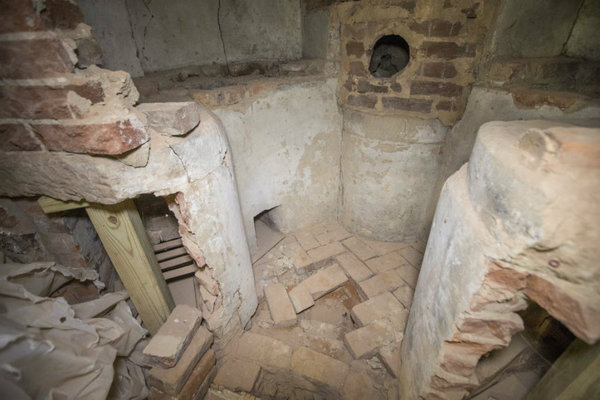What Thomas Jefferson's hidden lab teaches about US science education
The discovery of a hidden chemistry classroom at the University of Virginia sheds light on the shift from religion to science as a central principle of education at US universities.

History and science collided at the University of Virginia on Friday, when the school announced the discovery of a hidden chemistry lab amid ongoing renovations of its historic Rotunda building.
The room offers a glimpse into the way science was taught in the mid-19th century, as well as to the role of Thomas Jefferson – who founded the university in 1819 – in facilitating the shift from religion to science as a central principle of higher education in the United States.
“It really is the beginning of the teaching of science” as fundamental, said Jody Lahendro, a supervisory historic preservation architect for UVA. “The Enlightenment, changing the viewpoint of the world.”
Workers examining cavities in the Rotunda’s walls found a chemical hearth, designed for laboratory experiments, sealed in one of the lower floors, protecting the room from a fire that struck the building in 1895.
The room – which includes the hearth, fireboxes that provided heat, and five workstations cut into countertops, according to UVA’s official press release – was modeled after a laboratory in the College of Physicians and Surgeons in New York City, a lab run by William J. MacNeven, who mentored the university’s first professor of natural history, John Emmet.
Correspondence between Mr. Jefferson and Mr. Emmet suggests the lab was first equipped and used as part of their then-unusual idea to have students participate in rather than simply observe experiments.
The endeavor is emblematic of Jefferson’s emphasis on designing the campus in a way that reflected his vision for education at the university: for instance, the 10 pavilions erected along the open courtyard known as the Lawn “were to be centers of learning where professors both taught and lived with their families,” the Associated Press reported.
The chemical hearth may have been closed up in the mid-1840s, according to UVA, when the chemistry lab was transferred to the Rotunda’s southwest wing. Today, the university’s chemistry department has its own building and modern facilities, but the newfound hearth highlights a key period of UVA’s history.
“The hearth is significant as something of the University’s early academic years,” Mark Kutney, an architectural conservator in the University Architect’s office, said in the university release. “[W]e hope to present the remainder of the hearth as essentially unrestored, preserving its evidence of use.”
The chemical hearth will remain on permanent display once the Rotunda’s renovations – a $50 million project that is the building’s first major revamp since 1976 – are completed in spring 2016.
“This may be the oldest intact example of early chemical education in this country,” said Brian Hogg, senior historic preservation planner in the Office of the Architect for the University.